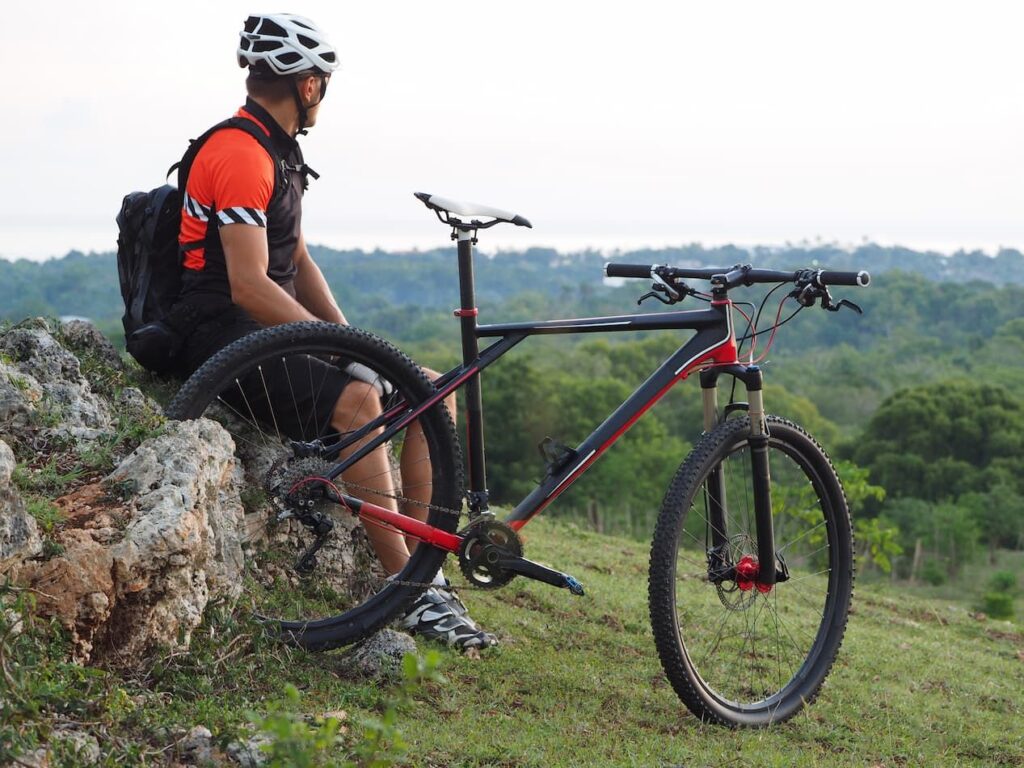Understanding Common Mountain Biking Injuries
Mountain biking is an adrenaline-packed sport filled with thrills and spills. But with the excitement often comes the risk of injuries. While some bumps and bruises are pretty much part of the territory, knowing how to prevent and treat common injuries can keep you riding longer and having more fun.
Common Injuries You Might Encounter
As with any sport, certain injuries tend to crop up more frequently in mountain biking. Here’s a look at some of the most common ones:
- Road rash: This is a common injury when you take a tumble and your skin meets gravel or dirt.
- Sprains and strains: Whether it’s a twisted ankle from a misstep or a pulled muscle, these are all too common.
- Fractures: Unfortunately, sometimes the force of the fall is enough to break a bone, especially in the wrist or collarbone.
- Dislocations: Falling off your bike can lead to dislocated joints, particularly the shoulder.
- Overuse injuries: These can build up over time and may include tendonitis or back pain.
Prevention Strategies
Now that you know what injuries to watch for, let’s dive into some effective prevention strategies. Preventing injuries is often way easier than dealing with them.
Gear Up Right
First and foremost, the right gear can make a massive difference. Investing in quality protective equipment is key.
- Helmet: This is non-negotiable. Get one that fits well and meets safety standards.
- Padded Shorts: These can help cushion falls and make those long rides a lot more comfortable.
- Gloves: Wearing gloves not only protects your hands but also enhances your grip.
- Elbow and Knee Pads: These are particularly helpful for those who love going downhill.
Warm Up and Cool Down
No one wants to get on their bike cold. A proper warm-up increases blood flow and prepares your muscles for the ride ahead.
- Stretching: Focus on your legs, back, and arms before hitting the trails.
- Light Cardio: A few minutes of light biking or jogging can get your heart rate up.
After your ride, don’t skip the cool-down. It can be just as important as warming up! Stretching at the end helps reduce muscle stiffness and improves flexibility.
Know Your Limits
This might sound cliché, but knowing your limits is crucial. Start with trails that match your skill level and gradually work your way up. You don’t need to impress anyone; your body will thank you later if you take it slow.
Stay Hydrated and Well-Nourished
Hydration is your best friend when biking. Dehydration can lead to fatigue and increase your risk of injuries. Plus, a well-nourished body maximizes your performance.
- Carry water: Keep a water bottle or camelback handy and take sips regularly.
- Snack smart: Choose nutrition bars or fruits for energy on the go.
First Aid for Common Injuries
Sometimes, despite all precautions, accidents happen. Knowing how to treat these injuries can make a world of difference. Let’s break down some basic first-aid tips.
Road Rash Treatment
Road rash can be painful but is generally manageable. First, clean the area gently. Avoid scrubbing as it can make it worse.
- Rinse with clean water: Make sure it is free from dirt.
- Apply antiseptic: Use a topical antiseptic to ward off infections.
- Cover it up: Use a sterile bandage to protect the area while it heals.
Sprains and Strains Management
If you twist an ankle or strain a muscle, follow the R.I.C.E method:
- Rest: Avoid putting weight on the injury.
- Ice: Apply ice to the affected area in 20-minute intervals.
- Compression: Use a bandage to wrap the injury and prevent swelling.
- Elevation: Keep the injury raised to reduce swelling.
Treating Fractures and Dislocations
These are more serious and typically require medical attention. However, if you suspect a fracture:
- Immobilize the area: Use a splint or even a rolled-up magazine in the absence of proper gear.
- Seek help immediately: Don’t try to move if you can avoid it.
Handling Overuse Injuries
Overuse injuries may come on gradually. Listen to your body; if you feel persistent pain, it’s often wise to rest and recover. Cross-training with other activities can also help to decrease stress on specific muscles.
Recognizing Symptoms
Some early signs of overuse injuries can include:
- Persistent Pain: Especially during or after biking.
- Swelling: If a specific area is inflamed.
- Reduced Mobility: Difficulty moving the affected area freely.
Seeking Professional Help
Sometimes, self-care just isn’t enough, and that is okay! If symptoms persist, consider visiting a healthcare professional. They can provide a diagnosis and recommend a rehabilitation program to help you recover.
Staying in Tune with Your Body
Noticing how you feel during and after rides is really important. Are you constantly sore? Feeling unusually fatigued? These could be signs it’s time to slow down a bit.
In my experience, keeping a riding diary has been helpful. By jotting down how I felt after each ride, I became aware of patterns that helped me modify my training routine and boost my performance.
Conclusion: The Journey Ahead
Mountain biking is a beautiful way to explore nature, challenge yourself, and elevate your health. By understanding common injuries, practicing prevention strategies, and knowing how to treat minor incidents, you will be well-equipped to enjoy many more rides ahead. After all, cycling should be about the joy of the journey—not the injuries that come with it. So gear up, stay safe, and hit those trails like a pro!






